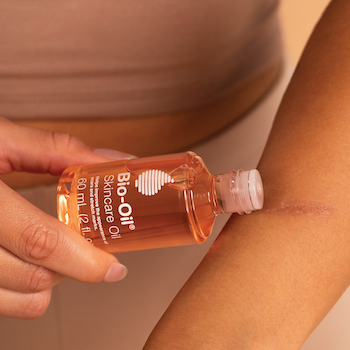Separating Skincare Fact from Fiction
Beauty and skincare promises are endless. From the perfect complexion to age-defying skin, the market is saturated with products that claim to work miracles. However, the truth is often far less glamorous. While skincare remains an essential part of our daily routines, many of the promises touted by companies, influencers, and brands are misleading at best, and downright deceptive at worst. As skincare enthusiasts, we must learn to navigate this maze of misinformation, separate the facts from the fiction, and identify the products that will genuinely benefit our skin.
In this article, we’ll take a deep dive into some of the most prevalent skincare scams circulating today. We’ll debunk popular myths, examine common deceptive marketing tactics, and ultimately help you make better decisions when it comes to your skincare routine. Stick around as we explore what really works for your skin and what you should steer clear of.
The Miracle Moisturizer
It’s no secret that moisturizers are a fundamental part of skincare. They hydrate, soften, and protect the skin’s natural barrier. But what happens when moisturizers are marketed as miracle products with astronomical price tags? Should you splurge on that $300 jar of luxury cream, or is it simply a case of clever marketing?
Luxury brands like La Mer, Dr. Sturm, and Augustinus Bader have built their reputations on high-end moisturizers that promise glowing, youthful skin. While these products may feel luxurious on the skin, their ingredient lists often contain basic elements such as glycerin, hyaluronic acid, or ceramides, ingredients that can be found in far more affordable products. The marketing behind these creams suggests that they hold the secret to ageless skin, but in reality, they rarely offer any more benefits than their drugstore counterparts.
Of course, there’s no harm in using products that feel indulgent or bring you joy. If the ritual of applying a luxury cream makes you feel pampered, by all means, continue to indulge. However, the idea that these creams provide transformative results is largely unfounded. The truth is that a basic, well-formulated moisturizer can deliver much of the same benefits at a fraction of the price.
Collagen Creams: Not What They Seem
Another prevalent skincare scam revolves around collagen creams. These products are often marketed with the claim that they can boost collagen production and tighten skin, leading to a more youthful appearance. However, the reality is more complicated.
Collagen, a protein that gives the skin its structure, cannot be absorbed through the skin when applied topically. While collagen-infused creams may offer temporary plumping and hydration due to the humectant properties of collagen, they do not stimulate the production of new collagen in the skin. The idea that a collagen cream can regenerate skin at a cellular level is misleading. The collagen in these products cannot penetrate the skin in a meaningful way. Instead, these creams often act as moisturizers, temporarily improving the skin’s appearance by retaining water. So, while they may make your skin feel softer and look more hydrated, they won’t provide the long-term anti-aging benefits they claim to offer.
Stretch Marks and False Hopes
Perhaps one of the most insidious skincare scams is the marketing of creams designed to treat stretch marks and cellulite. Stretch marks, which occur when collagen and elastin fibers are stretched too far, are often a result of rapid weight gain, pregnancy, or hormonal changes. Likewise, cellulite is a genetic condition that affects the way fat deposits interact with the skin's connective tissue. Despite the prevalence of these concerns, there is no product on the market that can permanently remove stretch marks or cellulite.
Research has consistently shown that genetics play the most significant role in the development of stretch marks and cellulite. The idea that a cream can magically erase these concerns is a marketing ploy that preys on insecurities. While some creams may offer temporary hydration or a slight tightening effect, they cannot fundamentally alter the structure of the skin.
Stretch mark creams often boast about oils, vitamins, or other ingredients that claim to prevent or treat stretch marks, but there is little scientific evidence to support these claims. Even Bio Oil, which many people swear by, is not a miracle solution for stretch marks. The truth is that stretch marks are a natural part of life, and while treatments such as laser therapy or topical retinoids may help minimize their appearance, creams alone will not remove them.
Similarly, cellulite creams that contain ingredients like caffeine may provide a temporary tightening effect, but they do not address the root causes of cellulite. Caffeine has been shown to shrink fat cells temporarily, but the changes are minimal and fleeting. There is no miracle cure for cellulite, and expecting these creams to deliver permanent results is a recipe for disappointment.
The Cleansing Brush
In the early 2000s, the beauty world was swept up in the promise of sonic cleansing brushes. Brands like Clarisonic made waves with their high-tech facial cleansing brushes, claiming that they would remove impurities and provide a deeper cleanse than traditional methods. However, as time went on, it became evident that these brushes were not the miracle tools they were marketed to be.
First and foremost, the idea that we need a special tool to cleanse our faces properly is misguided. The best tool for cleansing your skin is your fingertips. Cleansing brushes can introduce unnecessary friction to the skin, leading to irritation, especially for sensitive skin types. They also have the potential to harbor bacteria, which is the last thing you want on your face.
Instead, what your skin needs is a proper cleansing routine. Double cleansing, which involves using an oil-based cleanser followed by a water-based one, is a more effective method for ensuring that your skin is truly clean. This method allows you to remove makeup, sunscreen, and other impurities without causing unnecessary irritation or friction. Cleansing brushes, on the other hand, add a layer of complexity and expense to a routine that can be simplified with just your hands.
Face Yoga: Not the Solution You Think
Recently, face yoga has gained popularity as a non-invasive way to “tone” the face and reduce the appearance of wrinkles. Promising results like a slimmer jawline or lifted cheeks, face yoga videos have become ubiquitous on platforms like Instagram and TikTok. However, the scientific evidence supporting these claims is virtually nonexistent.
While it is true that facial exercises can help with muscle tone, the idea that they can reshape your face or reverse the signs of aging is unrealistic. Additionally, repeated facial movements can contribute to the development of fine lines and wrinkles, much in the same way that frowning or squinting does. Botox exists precisely because it relaxes facial muscles to prevent the formation of these lines. Face yoga, on the other hand, may exacerbate them.
While gentle massages and stretches can be beneficial for relaxation, dedicating 30 minutes each day to facial exercises is unlikely to provide significant cosmetic benefits. If you're looking for a facial workout, stick to traditional exercise and leave the face yoga to the enthusiasts.
The “Acne Safe” Myth
Another marketing term that has cropped up in recent years is “acne safe.” Brands often label products as such to appeal to individuals with acne-prone skin. The issue with this label is that it oversimplifies the complex nature of acne. Acne is not caused by a single ingredient, nor can it be avoided simply by steering clear of a list of supposedly comedogenic (pore-clogging) ingredients.
The truth is, there is no universal list of ingredients that clog pores across all individuals. Ingredients may behave differently depending on their concentration, the formulation of the product, and individual skin reactions. In many cases, an ingredient that may clog pores for one person may not have the same effect on another. Therefore, the idea that a product is “acne safe” because it lacks certain ingredients is misleading.
The “Clean” Skincare Trend
The term “clean” has become a popular buzzword in skincare marketing. Brands often use it to indicate that their products are free from harmful chemicals, such as parabens or sulfates. However, “clean” is an entirely unregulated term. There is no official definition or scientific basis for what qualifies as “clean” skincare. Furthermore, the idea that certain ingredients are inherently “toxic” is simply not true. All skincare ingredients used in reputable brands are considered safe for use, and the claims made by “clean” brands often prey on fears that have no scientific foundation.
Apps like EWG and Yuka further complicate this issue by rating products based on their “cleanliness.” These apps, however, are not based on scientific evidence and may steer consumers toward products that are not necessarily more effective or safer. The reality is that any skincare product available for purchase in the U.S. is regulated for safety, and there is no need to worry about toxic ingredients if you’re purchasing from reputable brands.
Castor Oil: A Hair Care “Miracle”?
Lastly, let’s address the myth of castor oil as a miracle cure for hair growth. While castor oil has long been used in various cultures for hair health, there is no scientific evidence to support the claim that it significantly boosts hair growth. It may temporarily improve the appearance of hair by making it shinier or softer, but it does not have the magical properties that many influencers claim.
For those truly looking to improve hair health, coconut oil is a much more studied and proven option. Rich in fatty acids, it nourishes the hair and helps prevent damage, making it a better choice for those concerned about brittle hair or split ends.
The Real Scam: Non-Licensed Dermatologists
Perhaps the most dangerous scam in the world of skincare is the rise of non-licensed medical professionals offering treatments and procedures. With the proliferation of online consultations and at-home skincare kits, it is essential to ensure that any procedure you undergo is performed by a licensed dermatologist or medical professional. The dangers of non-licensed dermatologists extend beyond ineffective treatments to potentially permanent damage. At-home microneedling kits, unregulated chemical peels, and injectable fillers purchased online are just a few examples of high-risk trends. Without the expertise of a trained professional, users may face complications such as infections, scarring, or even life-threatening allergic reactions.
Equally alarming is the rise of “cosmetic clinics” staffed by individuals without medical credentials. These providers may use counterfeit or improperly stored products, resulting in unpredictable outcomes. If you’re considering any invasive treatment, always verify the practitioner's qualifications, check reviews, and ensure the facility is licensed and reputable. Remember, quality skincare results come from a combination of science-backed products and treatments performed by trained professionals, not shortcuts.
Smart Skincare for the Modern Consumer
The skincare industry is vast, enticing, and often overwhelming. It thrives on promises of perfection, but as consumers, we have the power to look past the noise and make informed decisions. By educating ourselves about misleading claims, avoiding overpriced "miracle" products, and seeking out reputable professionals for advanced treatments, we can build a skincare routine that genuinely benefits our skin.
True skincare success isn’t about chasing every trend or splurging on the most expensive products. It’s about understanding your skin’s unique needs, embracing a simple and effective routine, and staying skeptical of too-good-to-be-true promises. Armed with knowledge, you can navigate the industry wisely, investing in products and practices that deliver real results—not empty marketing hype. After all, your skin deserves nothing less than the best.

















